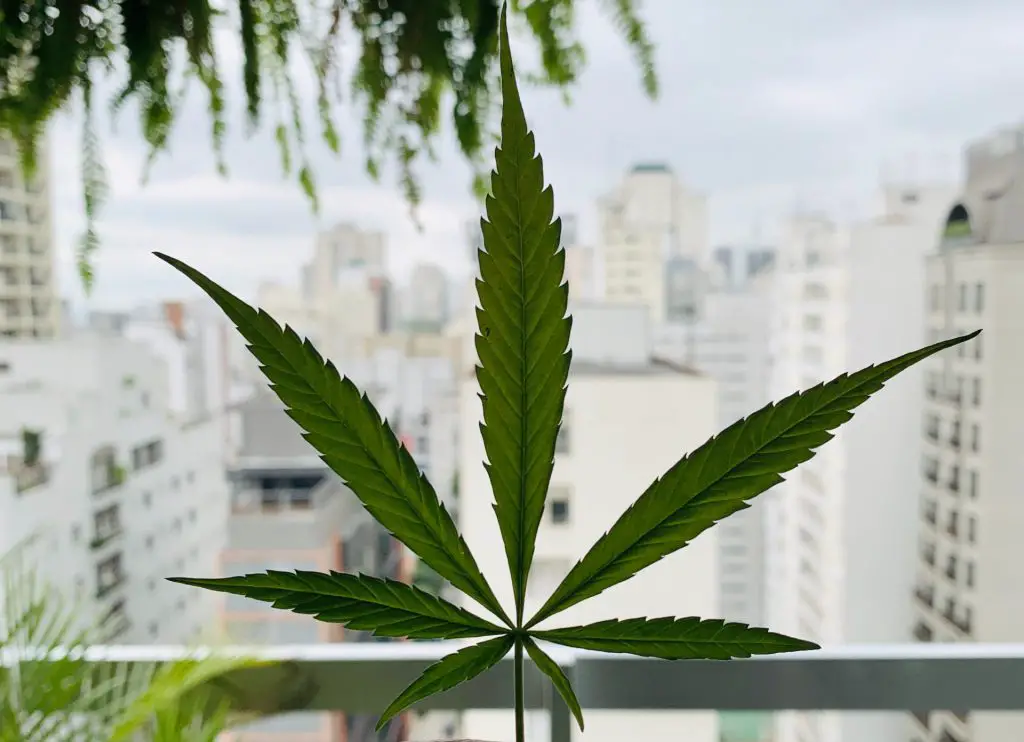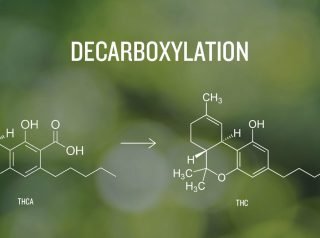The image of a lazy, unmotivated stoner may be more than just a social stigma. Quite possibly, it could be a manifestation of the so-called “Marijuana Amotivational Syndrome.” Supposedly, it may develop in individuals who have been using weed heavily – and for a long time.
Being lethargic and unproductive is a common stoner stereotype. Mostly, it is due to how the media represent users. Such a negative notion, of course, is flatly rejected and found to be offensive by many people who have reaped the benefits of marijuana. Yes, its use – especially Indica strains – can produce relaxing and couch-locking effects. For many hardcore consumers, even so much as insinuating that its consumption could turn one lazy is highly blasphemous.
Quite understandably, some people would also argue that Marijuana Amotivational Syndrome does not exist. After all, research is few and far between, making it hard to find a definitive answer. But, more and more studies are looking into the long-term impact of marijuana on the brain. And, these may offer insight into how cannabis affects motivation.
Marijuana and Amotivational Syndrome
Changes in personality, emotion, and cognitive abilities characterize Amotivational Syndrome. Affected individuals may be in a perpetual state of apathy and passivity, having no motivation or desire to do anything, interfering with their ability to maintain a job and interact with other people. In some cases, a person may choose to avoid social situations entirely. Due to the cognitive changes, impaired memory and concentration are also not uncommon.

This condition was first observed in the 1960s among chronic cannabis users. Since then, patients using other mind-altering substances, including solvents and meth, have also exhibited similar symptoms. Today, this psychiatric disorder is primarily associated with long-term marijuana use, giving birth to the term “Marijuana Amotivational Syndrome.”
How Marijuana Affects Motivation
“Amotivation” or “a lack of motivation” is the primary symptom of this condition. It is most likely a direct result of how marijuana – particularly THC – affects the brain.
THC – short for tetrahydrocannabinol – is the main psychoactive component of the plant. It acts upon the cannabinoid receptors in the endocannabinoid system (ECS) to exert a range of mental and physiological effects. The ECS is a complex biological system that helps maintain homeostasis. Quite simply, it is present in the body even if you do not use weed.
There are two major types of receptors – CB1 and CB2. The CB1 – expressed mostly in the central nervous system – is involved in modulating dopamine production and thus plays a role in motivation, reward, and learning. Low levels of this “feel-good” chemical in the brain have been linked to a lack of motivation, depression, and mood changes, among others.

Once THC binds and activates the CB1, a surge of dopamine is released in the brain, producing the “high” associated with marijuana use. But, this is merely the acute effect. When a person consumes cannabis excessively for a long time, the reverse can happen.
According to one study, chronic marijuana use may blunt the dopamine system. Hence, it could lower motivation and trigger other ill effects on mental health by altering the brain’s reward system.
In another study, chronic, heavy marijuana users appeared to have a compromised dopamine system. Positron emission tomography scans, in particular, revealed a decreased dopamine release rate in the striatum. This brain region plays a role in motivation, reward, and cognition.
It is worth noting that the participants, including 11 individuals aged 21-40, generally started using marijuana at about age 16. By age 20, they have become dependent on it. The findings shed light on the potentially detrimental effects of cannabis on adolescents.
Adverse Effects of Heavy, Chronic Marijuana Use
Marijuana Amotivational Syndrome typically occurs in individuals who have been using cannabis for a long time. For most, the onset of use is during adolescence – age 16 or even younger. In other words, teenagers have the highest risk of developing this condition. To make matters worse, they also happen to be prone to substance abuse.
If they keep consuming weed heavily for years, it could only lead to adverse outcomes. Interestingly, most of these are symptoms associated with Amotivational Syndrome, including cognitive dysfunction, impaired memory, poor educational achievement, and low life satisfaction.
Studies show that it mostly boils down to how marijuana induces long-term changes in the teenage brain.
Risk of Addiction and Abuse
In the United States, marijuana is one of the most commonly used drugs among teenagers. In a recent study involving over 12,000 adolescents, 16% of 12th graders claimed using marijuana in the past month.
Unfortunately, the early onset of use could lead to marijuana abuse and dependence. This is also known as cannabis use disorder (CUD). It is recognized in the fifth edition of the Diagnostic and Statistical Manual of Mental Disorders (DSM-5).

According to the National Institute on Drug Abuse, 1 out of 6 users who started smoking marijuana in their teens, and 25-50% of those who use it daily, will become addicted to it.
In another study, adolescent-onset users are significantly more likely to experience drug dependence problems later on – as compared to individuals who started using weed as adults.
May Interfere With Brain Development
The human brain does not stop developing until about 25 years of age. Abusing substances like alcohol, nicotine, and caffeine can affect the way the adolescent brain matures. And, research suggests that cannabis could also do the same.
According to one review, heavy marijuana use during teenage years could disrupt neurodevelopment – or the brain’s ability to form neurological pathways involved in performance and functioning. The current neuroimaging, neurocognitive, and preclinical evidence revealed the following unusual changes in the adolescent brain:
- Impairments in areas involving attention and memory (which persist even after abstaining from weed)
- Altered structural brain development
- Abnormal neural functioning
As a result, the cognitive, behavioral, emotional, and social functioning of the teenagers may deteriorate later in life. Some, for example, may eventually display aggressive and risky behaviors. Their cognitive performance may also worsen. And, the earlier and more frequently they use marijuana, the poorer the outcomes will be.
May Lead to Cognitive Decline
Cognition covers many mental processes involved in learning and comprehension, including attention, memory, judgment, and problem-solving. As mentioned, this might be compromised with chronic cannabis use.
Research reveals that individuals who started using marijuana heavily during their teens had lower IQ as adults. Most likely, it was due to a broad decline across different areas of functioning.

The study followed over 1000 participants from birth to age 38 years. Interviews on marijuana use were conducted five times over the years. Neuropsychological tests, on the other hand, were performed at age 13 (before the onset of use) and at age 38 (after consumption patterns were developed).
Based on the data gathered, early, heavy marijuana users dropped an average of 8 IQ points from childhood to midlife. Additionally, they showed a neuropsychological decline in learning, memory, and executive functioning. The more persistent the use, the greater the decline. The intellectual deterioration was not fully restored even after the cessation of cannabis use.
The results highlight the possible neurotoxic effects of marijuana on the teenage brain.
May Impair Short-Term Memory
Experts are also looking into the effects of marijuana use on a specific aspect of cognitive function – memory. Of note is short-term memory – a system responsible for storing a small amount of information that is readily available for a short period.
Impaired short-term memory is a common side effect of acute cannabis intake. This makes it difficult for users to learn and retain information while intoxicated.
As it turns out, this problem may persist in the long-term. Early, heavy use of high-THC strains, in particular, could increase the risk. Even worse, the memory deficits may remain even after abstaining from regular and heavy cannabis use. And, they may worsen with increasing years of regular use.
May Reduce Life Satisfaction and Achievement
Research suggests that marijuana could significantly lower the life satisfaction and achievements of an individual by worsening the mental and emotional faculties.
A study analyzing the data of nearly 4000 students found that adolescent cannabis use was associated with adverse psychosocial outcomes. Compared to non-users, individuals who were daily users before age 17 had lower odds of finishing high school and attaining a degree. They also had an increased risk of later cannabis dependence, use of other illicit substances, and suicide attempt. The effects appeared to be dose-dependent.

In the previous study involving neuropsychological decline, researchers also found that adolescent-onset, heavy marijuana users were more likely to have economic and social problems in adulthood. These include:
- Lowering of social class
- Financial difficulties
- Antisocial behavior at work
- Relationship problems
- Traffic violations
Research on Marijuana Amotivational Syndrome
Based on the available data, it is clear that cannabis can be deleterious to adolescents, especially when abused for many years. There is also the fact that it could negatively impact different areas of functioning in the long run. Does it mean that marijuana Amotivational Syndrome is real?
It is not as straightforward as that. Decades after the condition was first described, experts remain divided on the topic. Mainly, it is because research – especially controlled trials – is still scarce. On the one hand, most of the earlier studies conclude that the syndrome does not exist. Later explorations, on the other hand, say otherwise.
In one study, nearly 1300 individuals were interviewed regarding cannabis use, motivation, and life satisfaction. After analyzing the data, researchers found no link between heavy marijuana use and low motivation. Furthermore, existing medical conditions – rather than weed intake – most likely played a role in the decrease in well-being.
Similarly, another study claimed that impaired motivation could be a symptom of depression – not an upshot of frequent cannabis use. That is because heavy weed intake was often associated with an already existing depression. This is substantiated by an earlier study.
On the other end of the spectrum, there is evidence providing partial support for marijuana Amotivational Syndrome.
A study involving 500 participants, for example, found that marijuana use significantly lowered initiative and persistence, resulting in decreased self-efficacy.
Another study affirmed that there could be a causal link between cannabis use and reduced motivation. This was the conclusion of researchers after assessing 22 studies.
Right now, things are still vague. In the end, further research is needed to verify the role of marijuana use in lowering motivation.
So, Should You be Alarmed?
Marijuana Amotivational Syndrome is the subject of many heated debates. Due to limited research, it is hard to say if it is real or not. But, currently, there is simply not enough evidence supporting its existence.
Still, it does not mean that you should not be alarmed. After all, research suggests that persistent cannabis use could compromise the brain’s reward system. Consequently, this may have a negative impact on motivation. Not to mention, there are also a few notable studies backing it up, giving more credence to cannabis-induced Amotivational Syndrome.

Some of the harmful effects of chronic marijuana use can be considered a marker of the syndrome, including cognitive decline and poor achievement. As you might have noticed, these typically resulted from years of abuse, addiction, and dependence. And for many users, the onset of first use was during their teens. Unfortunately, using the plant this early could interfere with brain development, potentially inviting negative outcomes later in life. Simply put, adolescents are at the greatest risk of experiencing the adverse long-term effects of marijuana – including decreased motivation.
That said, if you consume weed moderately and responsibly, there should not be any problems. Also, if possible, avoid the plant before 25 years of age. Now that the research into Amotivational Syndrome remains inconclusive, the only thing we can do is exercise caution.





